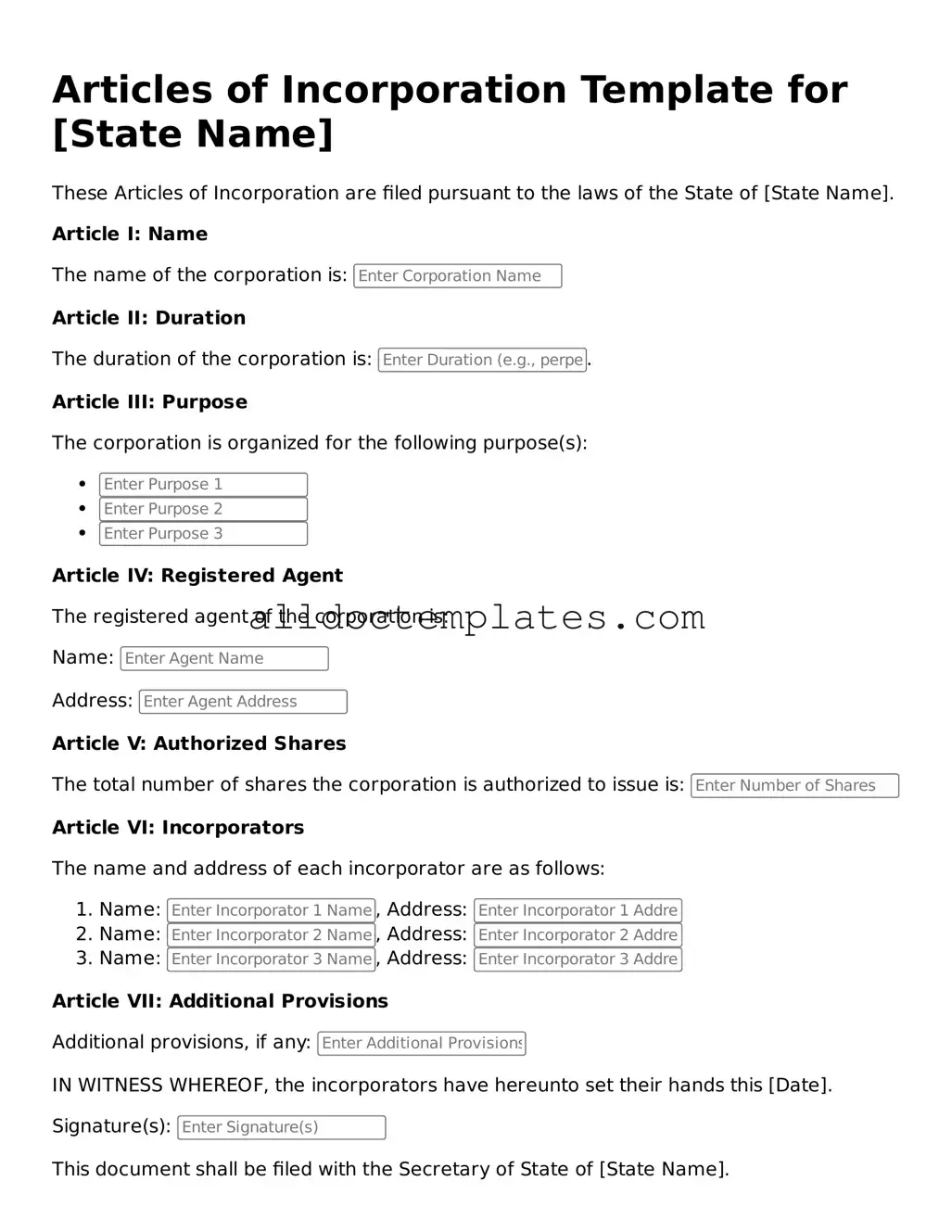Valid Articles of Incorporation Template
The Articles of Incorporation form is a legal document that establishes a corporation in the United States. This form outlines essential details such as the corporation's name, purpose, and structure. Filing this document is a critical step for individuals or groups seeking to create a distinct legal entity for their business operations.
Get Your Form Now
